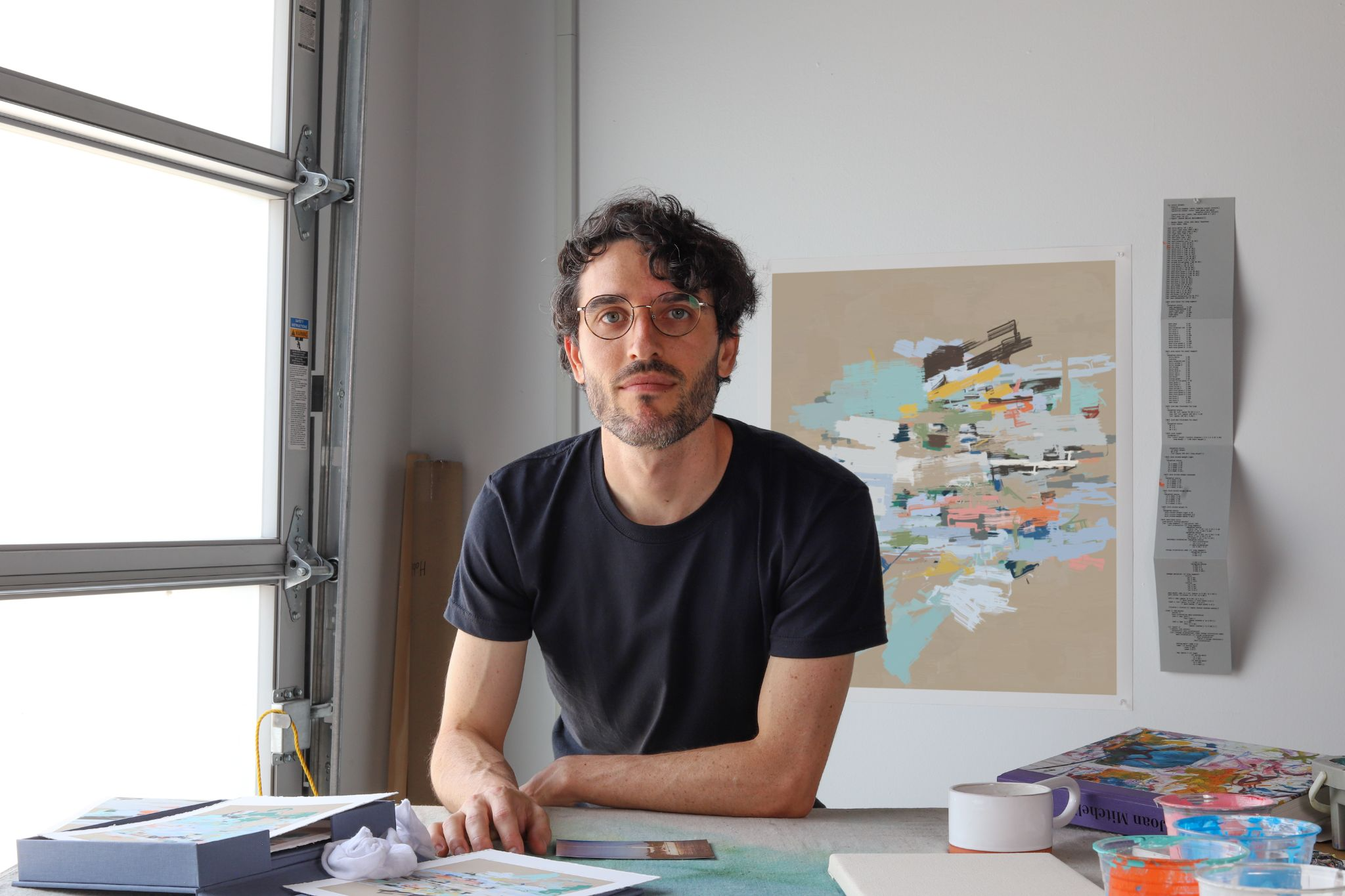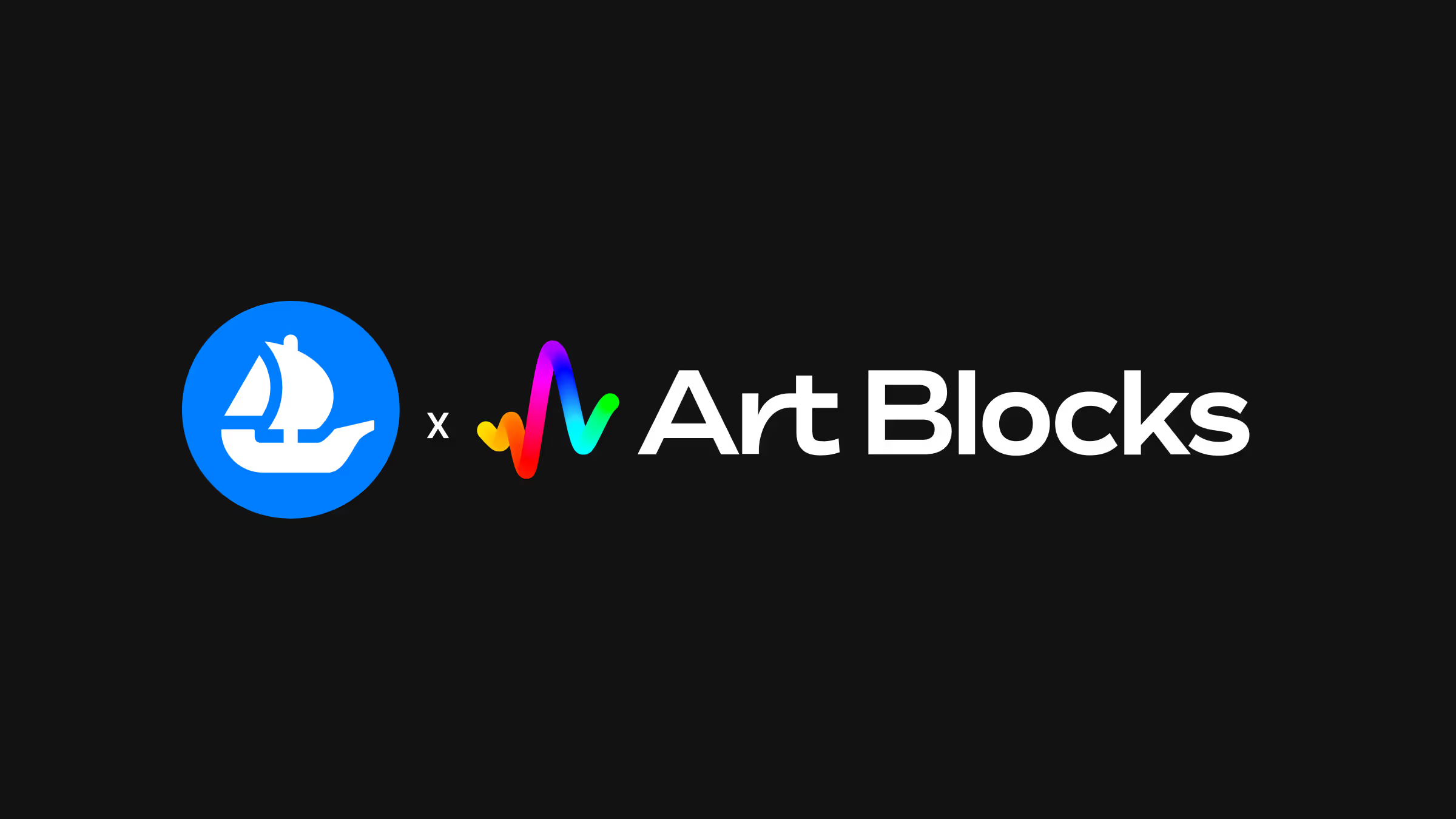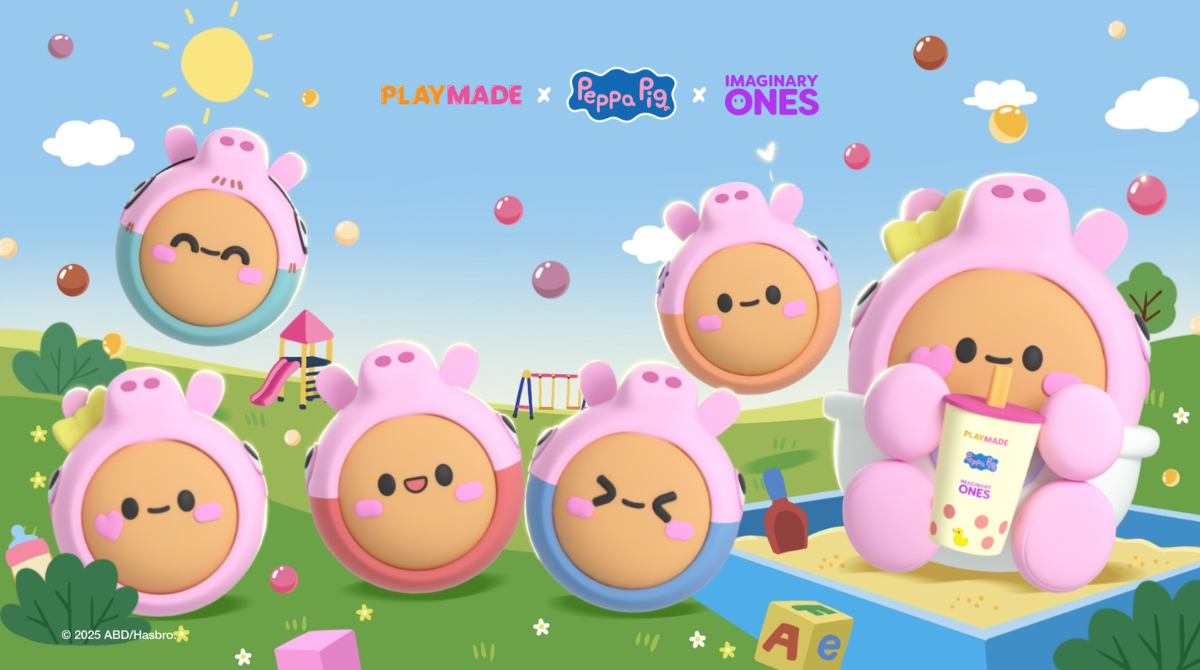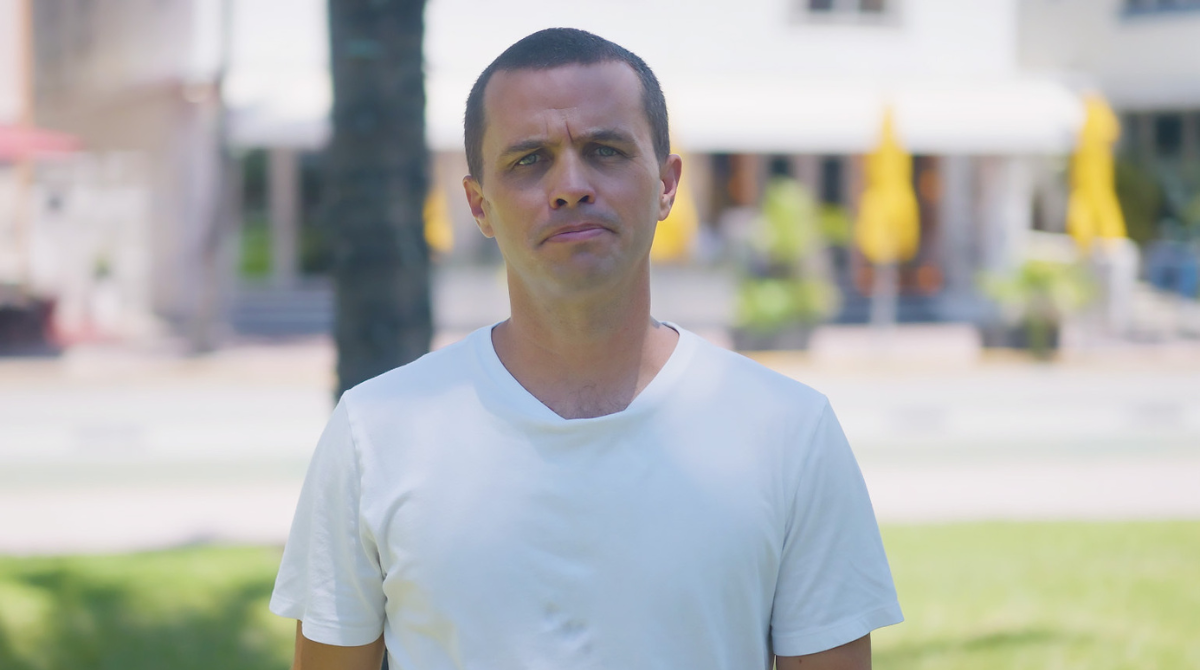Few names in generative art carry as much weight as Tyler Hobbs. Known for his groundbreaking series Fidenza and his role in shaping long-form generative art, Hobbs has built a practice that balances chaos with control, intuition with code. His work not only redefined the possibilities of algorithmic creation but also captured the imagination of collectors and artists worldwide.
In this conversation, Hobbs reflects on his journey from software engineer to full-time artist, the evolution of his signature flow fields, and the lasting cultural impact of platforms like Art Blocks. He also shares his thoughts on tangibility in generative art, the legacy of Fidenza, and where he’s headed next.

OpenSea: You began your career as a software engineer. What led you to leave that path and pursue generative art full-time? And when did you realize this medium had both creative and personal meaning for you?
Tyler Hobbs: Growing up, I always loved drawing and painting, and seriously considered going to art school before settling on studying computer science. Later, when working as a programmer, I continued to spend my spare time in the mornings and evenings creating artwork. It was always something that I felt deeply connected to. In fact, it felt like something that I needed to do. So, at some level, I’ve always had a goal of being an artist full-time.
While I worked as a programmer, I slowly built up my art sales over the years. I would sell prints and drawings through my website, or through local art fairs. Eventually, my income from art was getting high enough and stable enough for me to leave my job as a programmer and focus on art full-time. It took about seven or eight years of dedicated effort to get to that point, so it felt amazing to leave behind my day job and pour all of my best energy into art.

OpenSea: You’ve described your work as a balance between chaos and control. How does that tension show up in your creative process, and what does it mean to allow randomness to shape the outcome?
Tyler Hobbs: Almost all of the work that I make happens through the design of a “system”, usually an algorithm that I code myself. If that system was totally predictable, then that would mean I have perfect “control”, but I find that usually leads to uninteresting results. Instead, I try to work randomness into the system in order to make the results less predictable. That way, the outcomes can surprise me, and hopefully produce something that’s even better than what I could have imagined.
Determining exactly how to integrate randomness into the system is one of the core challenges of generative art. I try to make some parts of the system strict, and some parts of the system very “loose” through the use of deeply injected randomness. I want the system to do some things just the way I like them, but to take more liberties with other things, where there can be a range of different strategies that might be successful.
A typical end result that I like has a certain feeling order from the bones of the system and the influence of working through code. But it also has a wild, chaotic side where the system breaks down and something unexpected happens.
OpenSea: When starting a new piece or system, do you begin with a visual idea, a conceptual goal, or a technical challenge? How do intuition and code interact in your workflow?
Tyler Hobbs: When I start a new work, I typically do not have many thoughts about a desired end result. Instead, I am focused on looking for interesting starting points. I ask myself questions like “what if I combined this algorithm with that one?”, or “what if I took this algorithm designed for rectangles and used it on circles?” With these starting points, I have a suspicion that they may lead somewhere interesting, but I don’t know what that may look like. I find that I create better work if I let go of expectations. Instead, I try to have a mindset of “discovery” while I work. I follow the work wherever it leads me, one step at a time, and by the end, I’ve discovered what the work is supposed to look like.

OpenSea: Your signature use of “flow fields” has evolved across several bodies of work. What keeps you returning to that structure and are there new ways you’ve tried to experiment with it?
Tyler Hobbs: Flow fields continue to be an interesting technique for me, because they lend themselves to creating something that is an interesting mixture of being both controlled and unpredictable. They sit perfectly in the mixture of order and disorder that I like. On top of that, they are somehow both precise and “organic” at the same time. There’s a bit of the aesthetics of the computer mixed with the aesthetics of the analog world.
Every time that I use a flow field, I look for a new way to experiment with them. I don’t tend to repeat myself, so each usage is a bit different. However, Fidenza and QQL both captured and utilized many of the techniques that I had discovered over the years for working with flow fields. That’s why you’ll see them use different types of turbulence, or snap the curves into sharp angles, or play with overlapping versus non-overlapping shapes. The flow field is just one ingredient in the work, and everything else that happens in the work builds on top of that.
OpenSea: With Fidenza, you created one of the most recognizable projects in generative art. Looking back, what surprised you about how the series was received?
Tyler Hobbs: Almost everything about how the series was received was a surprise to me. I mean, I knew that the work was good — it definitely felt like the best thing that I had ever made. I also knew that I had a strong following and the respect of many of the other artists in the space, so I was positioned well for Fidenza to be successful. But, the scope of the response was way beyond anything I could have imagined. The way that so many collectors became so passionate about it was incredible to see. They were taking a closer look at my work than anybody else had before. The sales numbers were mind-blowing.
To this day, fans and collectors are incredibly passionate about Fidenza. It’s cool to see that last. In many ways, it feels like the appreciation has grown over time, and looking back, you can see the influence that it had on other generative work coming out around that time. It feels great to have created something that was meaningful to collectors and artists alike.
OpenSea: Fidenza’s success brought your work to a much broader audience. How has that visibility changed your approach to creating and releasing new work?
Tyler Hobbs: The increase in visibility has definitely had an impact on when and how I show my work. These days, I’m a lot more deliberate about revealing new bodies of work, and much more planning and effort goes into documenting the work, showing it off in a high quality way, and telling the story behind it. That means we’re shooting a lot more photos and videos in the studio while the art is being created. Fortunately I now have an amazing studio team to help me with that, so I’m still able to primarily focus on creating the artwork, while the team thinks about documenting it and how to show that to the world.
OpenSea: You’ve made it a priority to offer physical prints tied to your NFTs. What role does tangibility play in how you think about generative art and how do you see that relationship evolving?
Tyler Hobbs: I always want collectors to be able enjoy their artwork in the best way possible. For much of my digital work, the best all-around experience comes from a high quality print. Of course, that’s not always the case – some work is best viewed on a screen, for example. But, due to the limitations of the current crop of digital displays (limited aspect ratio options, limited resolution, problems with color accuracy, and some undesirable details like cables), prints have many advantages. They also make it very easy for the collector to live with their work (i.e. have it on a wall in their home or office), which is important to me.
In the future, as display technologies improve, I expect electronic displays to become a stronger option, and prints may fade in importance.

OpenSea: Art Blocks has played a major role in the rise of generative art. How did joining the platform shape your creative trajectory, and what about it resonated most with you?
Tyler Hobbs: Art Blocks had such a massive impact on my creative trajectory that it’s quite difficult to imagine how things would have done without it. I definitely owe Erick and the rest of the team a huge debt of gratitude.
When I first heard about it, Art Blocks really excited me for a couple of reasons. First, it was incredible to see the community of collectors around Art Blocks that were so passionate about collecting digital art. I had never seen that before! In the traditional art world, collecting digital art was a rare event that few collectors participated in, so this was a big shift.
Second, the particular model that Art Blocks used connected to vision that I had had around generative art for years. It’s what today we think of as “long form generative art”: the crafting of complex and highly variable generative works, where each output is so surprising that even a collection of hundreds of images from that one algorithm can be compelling to view. I had been thinking about this possibility since my first days creating generative art and slowly working up to it, but Art Blocks created the environment for it to actually happen.
OpenSea: Art Blocks recently announced the “Art Blocks 500,” signaling the completion of its first five-year era with a “glass case” preservation and legacy program. As a Curated artist, how do you see this milestone reframing the platform’s cultural impact and your own work’s place within that legacy?
Tyler Hobbs: The “Art Blocks 500” certainly captures a very special moment for generative art. In many ways, it represents the culmination of work by an entire generation of generative artists, and showcases a massive leap forward in what the art form can do. Of course I’m proud to see that my own work plays a special role in that set, but mostly it makes me happy to see that so many of the other generative artists that I’ve come to know and respect all took a shot at this “long form” format. It’s beautiful to see how each artist approached the challenge in their own way.
OpenSea: What’s next for you? Are there any upcoming projects or ideas you’re excited to explore in the near future?
Tyler Hobbs: I’m always in the studio, constantly working on new artwork! Most of the projects I am working on these days are large ones, often needing multiple years to be completed. I’m just excited to take the ideas and methodology of generative art and apply them to other art forms and new artistic processes. There’s so much unexplored territory out there, and I love experimenting and learning. As long as I’m doing that, I’m having fun making artwork.
.png)



.avif)





.png)
.png)
.png)
.png)